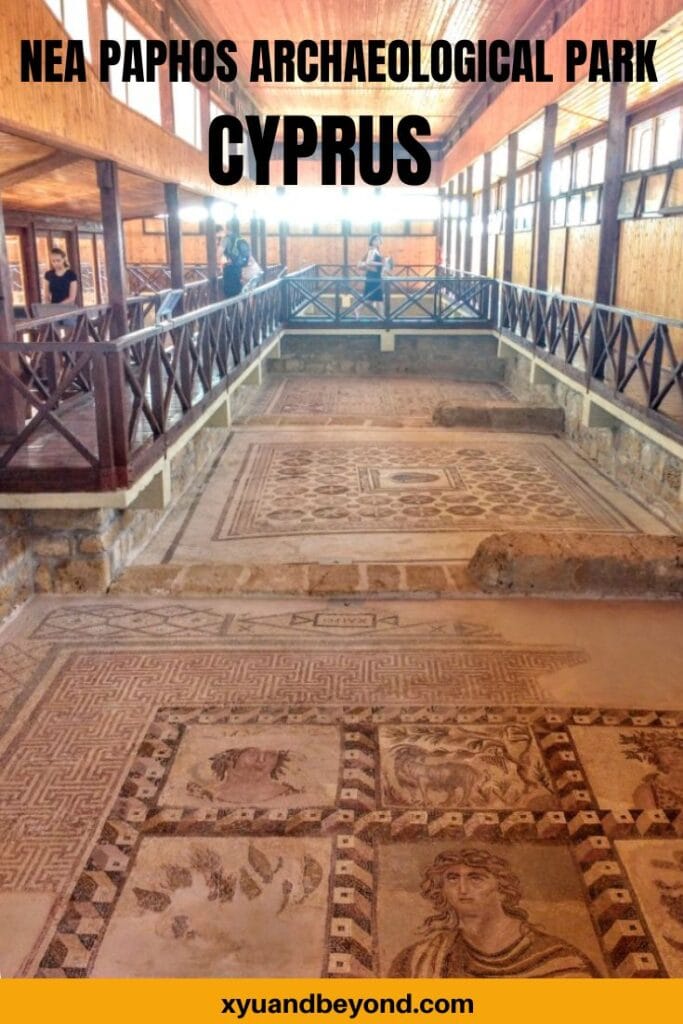Visiting the historic Nea Paphos Archaeological Park in Cyprus
Visiting the Paphos Archaeological Park in Cyprus allows you to step back in time to the 4th century. The Archaeological Park of Kato Pafos has been included in the UNESCO World Heritage Sites list since 1980. The park includes sites and monuments from the 4th century BC to the Middle Ages, while most remains date to the Roman period. The intricate mosaic floors of four Roman villas (the houses of Dionysos, Theseus, Aion and Orpheus) form the impressive centre of the finds and depict various scenes from Greek Mythology.

Never in a million years would I have guessed that I would not only visit Cyprus but stay there for several months and I have housesitting to thank for that. Ten thousand years of history, stunning beaches, long stretches of rocky coastline, fabulous food and amazing people make this incredible island a unique place to visit.
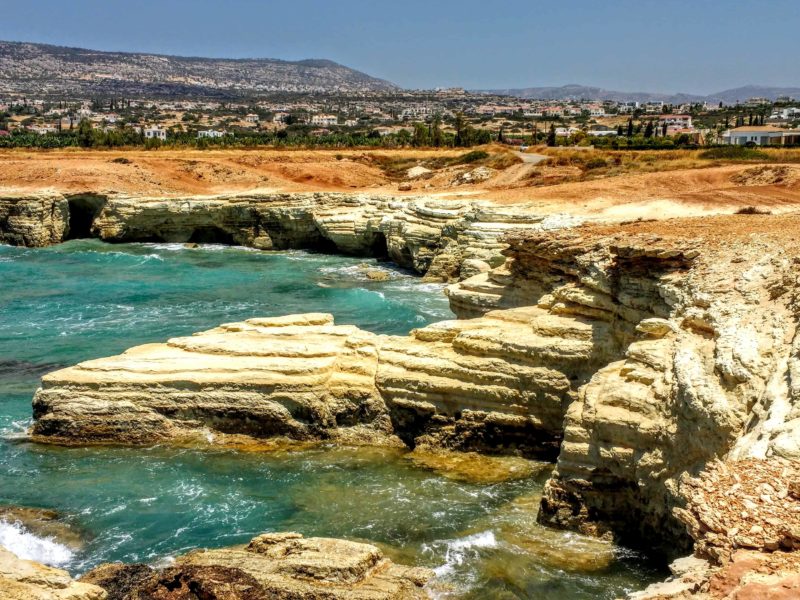
With one of the oldest recorded histories in the world, Cyprus lies at the crossroads of Europe, Africa and Asia. There are so many things to do in Cyprus it is blessed with magnificent natural beauty and it should come as no surprise that this is the land that gave birth to Aphrodite the Goddess of Love. While I spent most of my time in Southern Cyprus, I highly recommend going beyond the south and going on a road trip to Northern Cyprus.
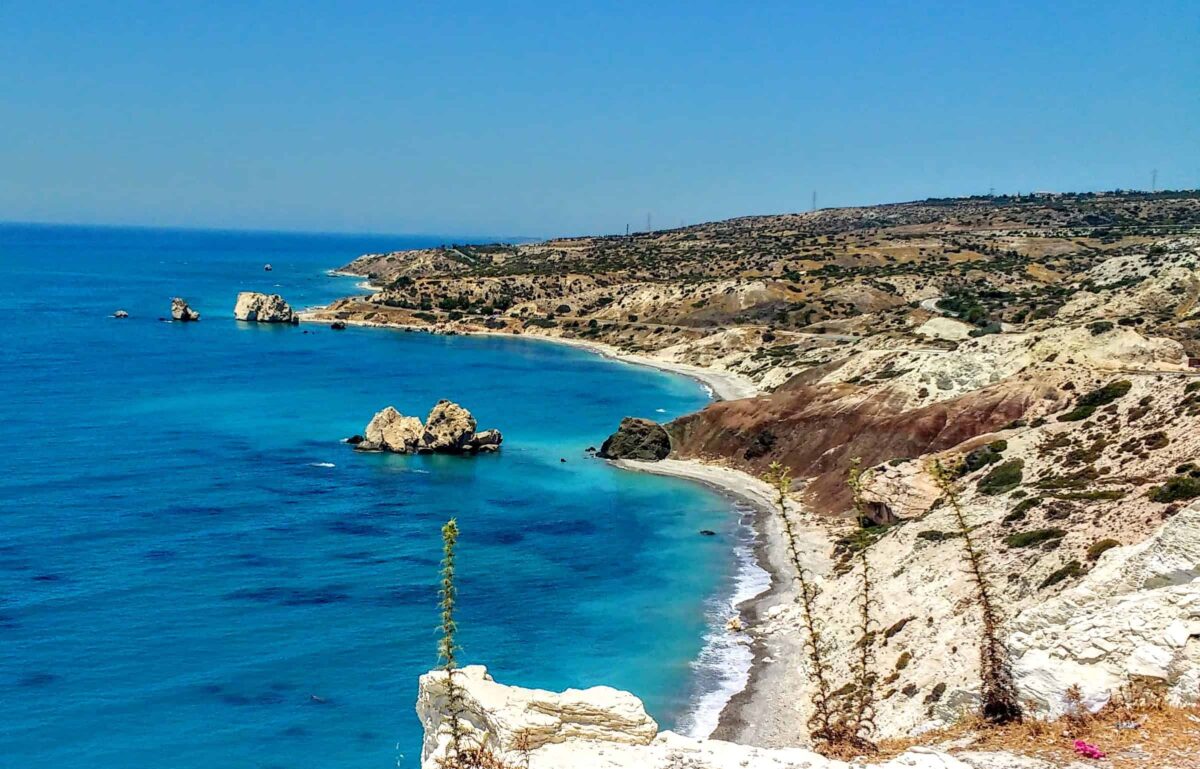
We were staying in a small village just outside of Paphos called Tala, not the greatest housesitting experience but that’s a story for another time.
History of Cyprus
Located just south of Turkey and west of Lebanon Cyprus sits in the glorious turquoise Meditteranean Sea. This region has been a historic and cultural crossroads for over two millennia and Cyprus at the southwest of the island has played a role in the ancient history of Persia, Greece, the Roman Empire, early Christianity, and much more.
Alexander the Great claimed Cyprus in the 4th century and remained part of his empire until the Romans arrived in 30BC.
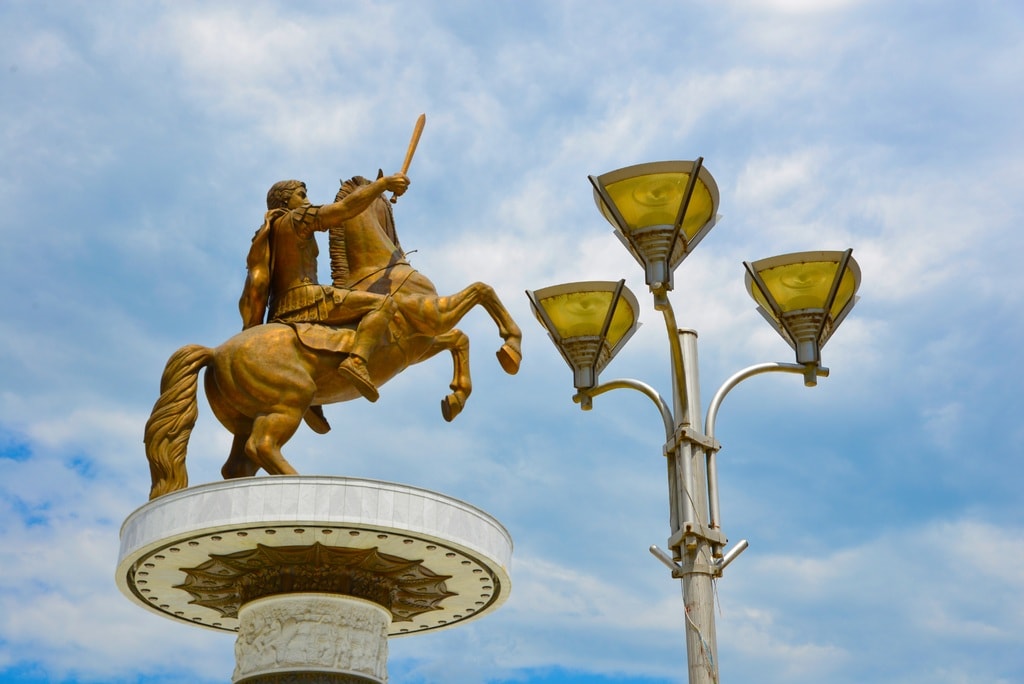
The Romans possessed Cyprus until around 330AD and then it was conquered by Richard the Lion Heart on his way to the third Crusade. Richard sold the island to the Knights Templar who then sold it to the Lusignans who ruled here for 300 years.
The last of the Lusignans then ceded the Island to Venice in 1489 but they couldn’t withstand the Ottoman Invasion which ruled Cyprus until the British arrived in 1978.
Cyprus gained independence from Britain in 1960 but since 1974 the Island has been effectively divided into Turkish Cypriot and Greek areas by a United Nations manned line known as the Green Line. However, there is peace on the Island today even though the split still remains.
Cyprus has numerous historic and ancient sites to visit from the birthplace of Aphrodite to the Troodos mountains. One of the most fascinating to those who are history buffs is the Pafos Archaeological Park. Within the Kato Paphos, archaeological park are the rare and dazzling mosaic pavements that decorate many of the buildings at the site.

Paphos archaeological park entrance fee
The archaeological site of nea paphos – for just €4.50, you can explore these incredible mosaics and monuments dating to the prehistoric and medieval periods. For €8.50 you can get a day pass which allows you to visit all the ancient antiquities sites and museums in Paphos.
Paphos archaeological park opening times: Sun – Sat 12:00 AM – 11:59 PM

What is Nea Paphos?
Nea Paphos is one of the three components forming the Paphos archaeological complex inscribed on the UNESCO World Heritage List in 1980 for its outstanding mosaics and ancient remains, as well as its historical religious importance.
Five houses with large sections of mosaics with varying levels of damage can be seen at Paphos. The mansions are named after the recurring theme found in the mosaics inside: the House of Dionysus, the House of Theseus, the House of Aion, the House of Orpheus, and the House of The Four Seasons.
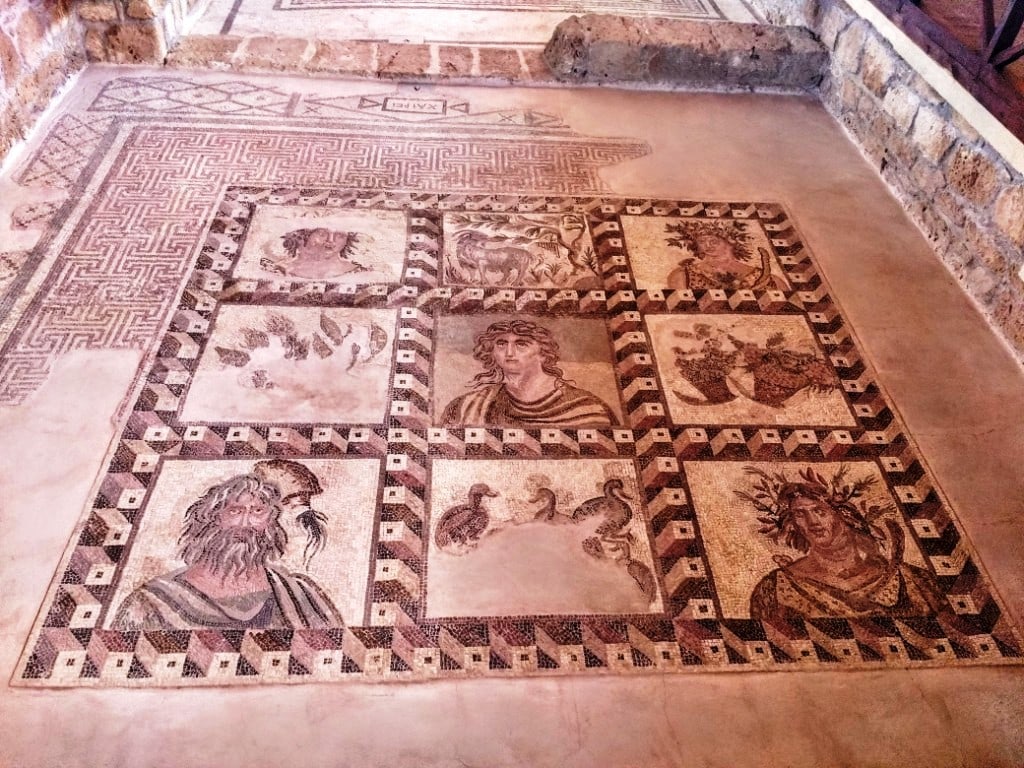
The House of Theseus
You will find the Roman Mosaics within the Paphos Archaeological Park, by the Kato Paphos harbour close to the ancient fort. The first area you come across is called the House of Theseus. This villa is obviously named after Theseus, who can be seen represented within some of the mosaics.
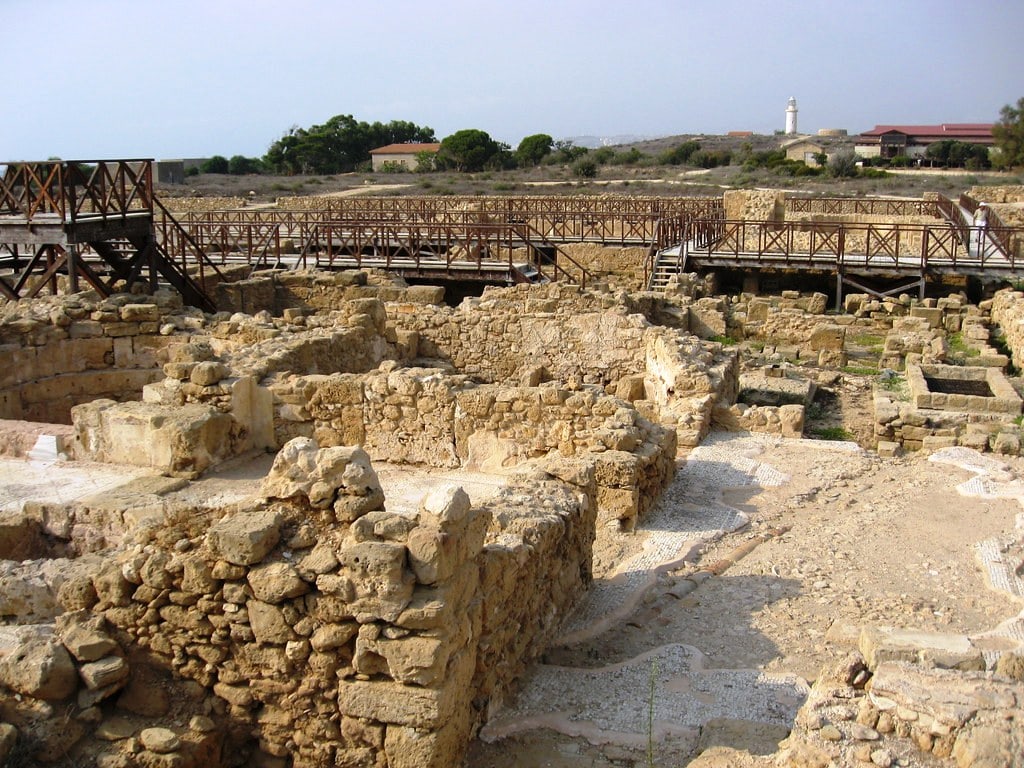
Surrounding the villa are a series of boardwalks from where you can see the various mosaics and information panels.
The House of Theseus was built during the second half of the 2nd century over some earlier ruins dating back to the early Roman and Hellenistic periods. The three centuries of Greek history between the death of Alexander the Great in 323 B.C.E. and the rise of Augustus in Rome in 31 B.C.E. are collectively known as the Hellenistic period.

The floorplan of the House of Theseus is incredibly large and probably would hae had over 100 rooms. The great size indicates that it probably was the home of the Governor of Cyprus. The building itself has a central courtyard with columns and four wings.
The largest floor mosaic is that of Theseus and the Minotaur, dating back to the 3rd century.
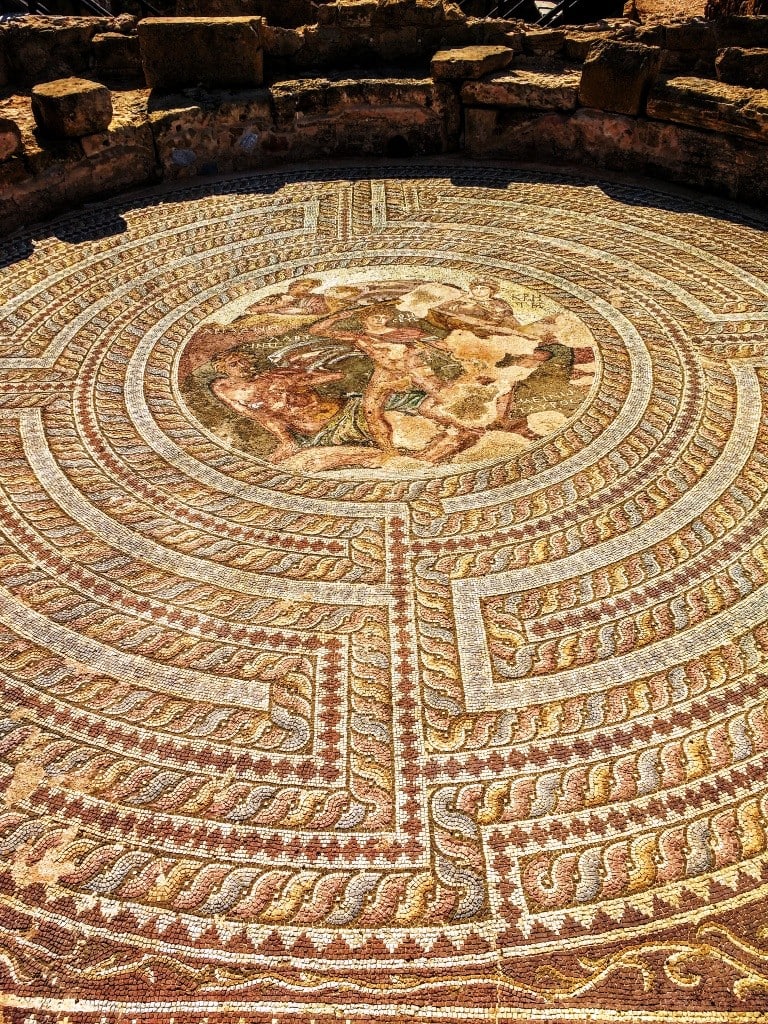
One of the mosaics depicts ‘The First Bath of Achilles’, which dates from the 5th century. The baby Achilles is seen with his parents, the 3 fates and his nurse.

House of Aion
The House of Aion was excavated in 1983 and covered to protect its stunning mosaics. The house takes the name of the God Aion due to the very faded mosaic depicting God. Only three rooms had been successfully excavated from this ancient Roman villa.
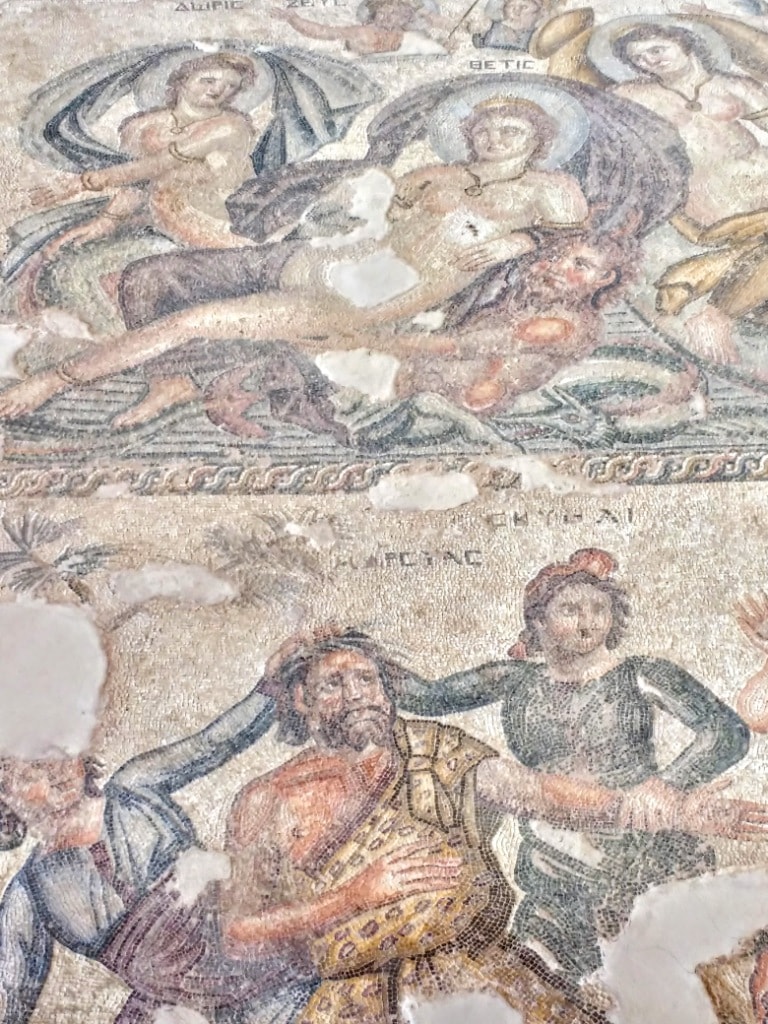
The mosaic floor on this villa is where you will find the most exceptional works of Roman art during ancient times. It is also one that is highly discussed by scholars. The wall of this villa had collapsed and was restored.
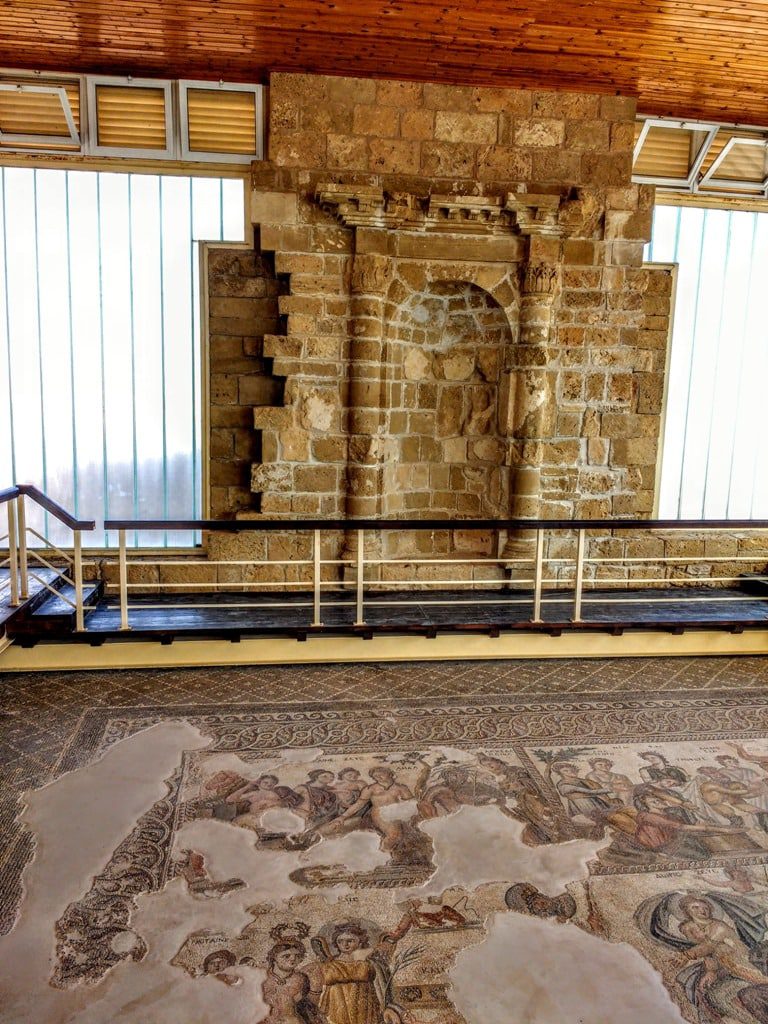
The House of Aion dates back to the 4th century and contains some incredibly detailed and intricate mosaics. Within the House, you will see mosaics of Apollo, Cassiopeia, Dionysos and Hermes.
The central panel is divided into 5 smaller panels depicting different mythological scenes. These include Leda and the Swan, the beauty contest between Cassiopeia and the Nereids, and in the centre a portrait of the God Aion whose name means time.
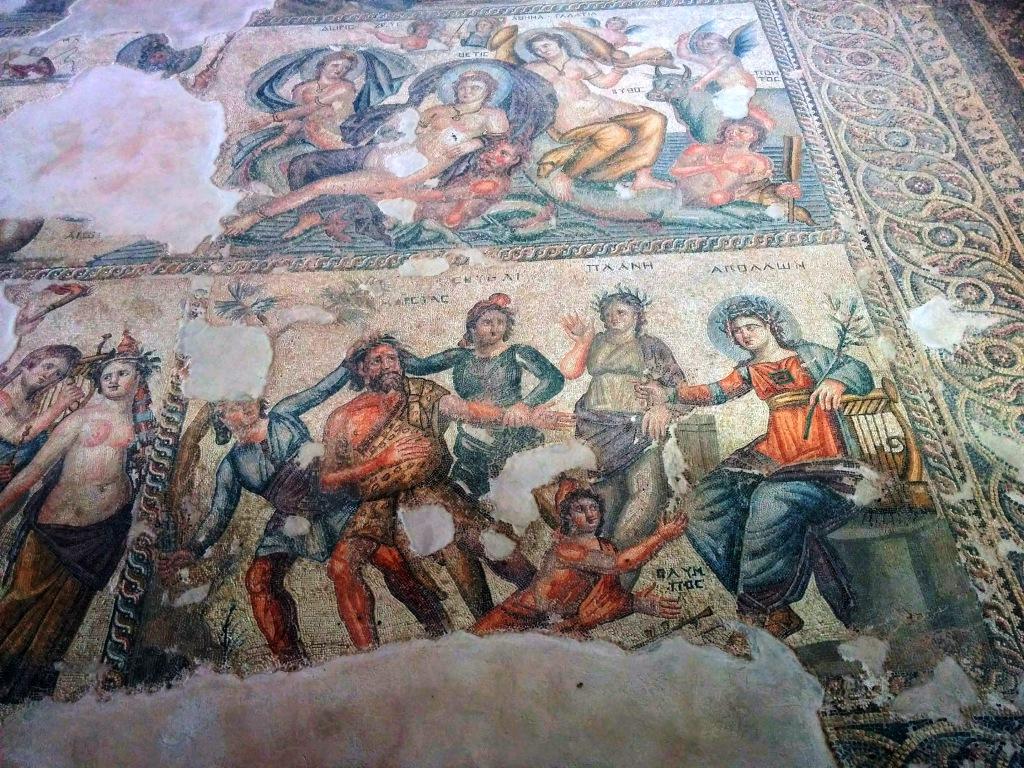
The House of Orpheus
Orpheus was a God famed for his skill in music and his playing of the lyre. The House of Orpheus dates back to the end of the 2nd and early 3rd centuries AD and probably belonged to a Roman General.
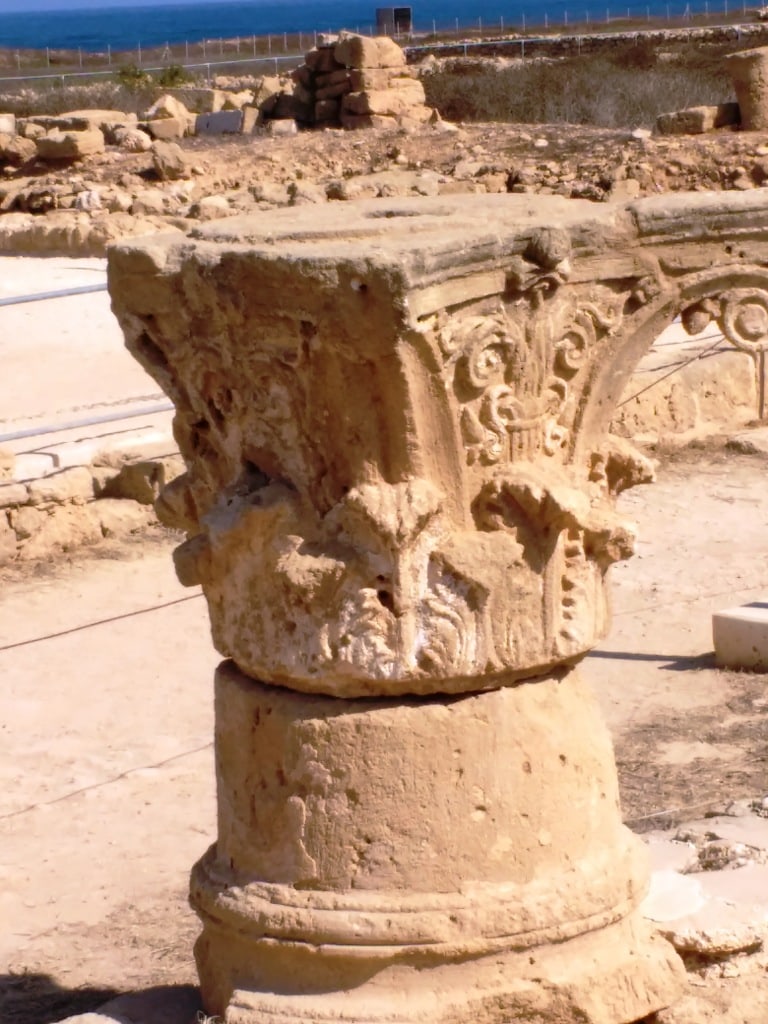
The house is organized around a peristyle atrium which is a typical roman style home with a central courtyard that was open to the sky and contained beautiful gardens. There would be a shaded portico embellished with elaborate wall paintings and the floors often had impressive mosaics depicting mythological scenes.
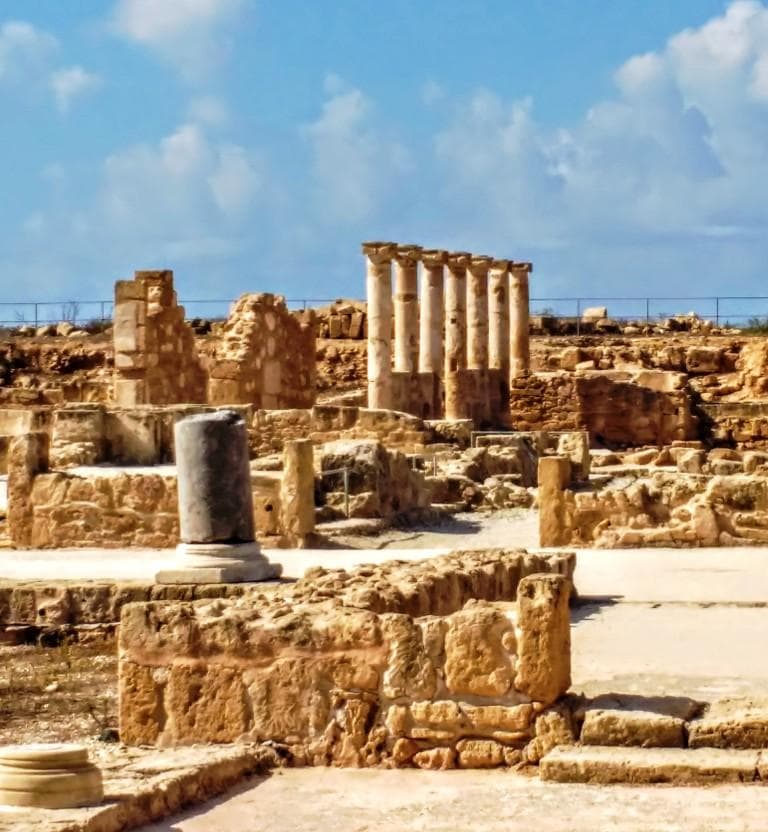
The House of Orpheus has a large mosaic representing Orpheus playing his lyre while surrounded by wild beasts.
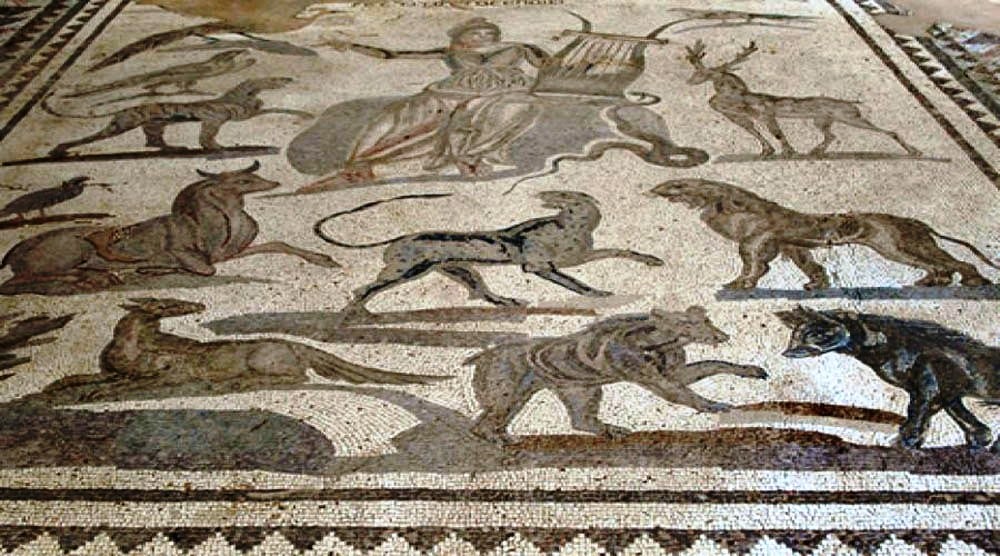
Another famous mosaic within the house depicts the battle of Hercules wrestling with the Nemea Lion.
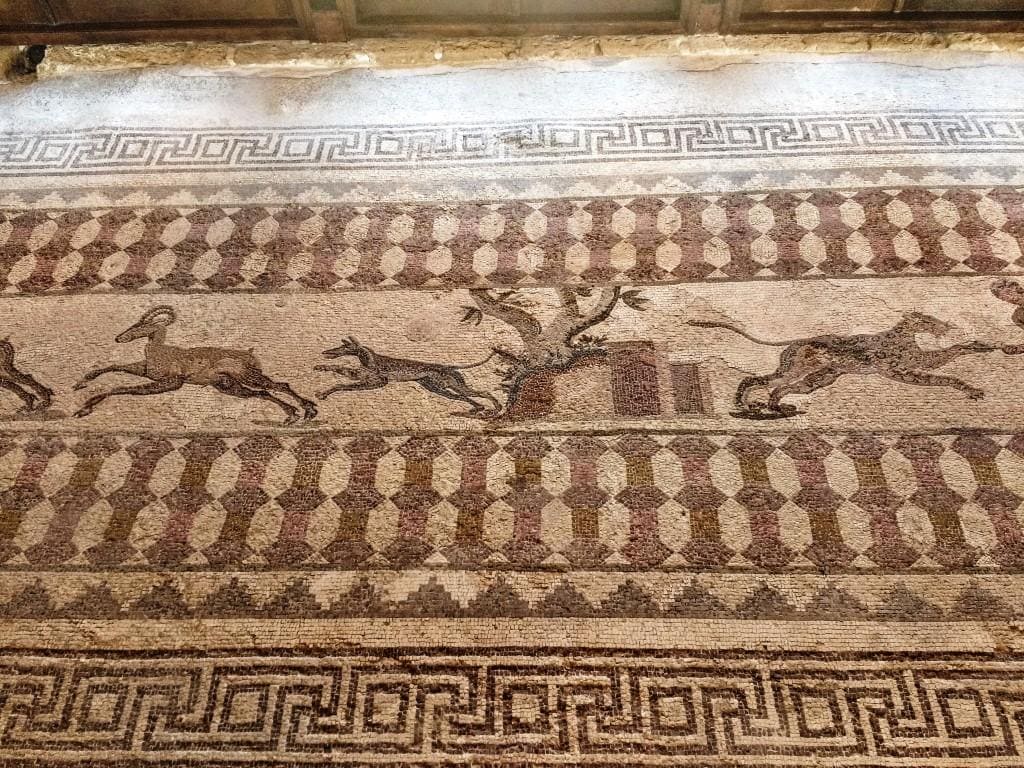
There are also hunting scenes which may indicate that this area was a banquet hall where these animals were the centrepiece of the meal.
House of Dionysos
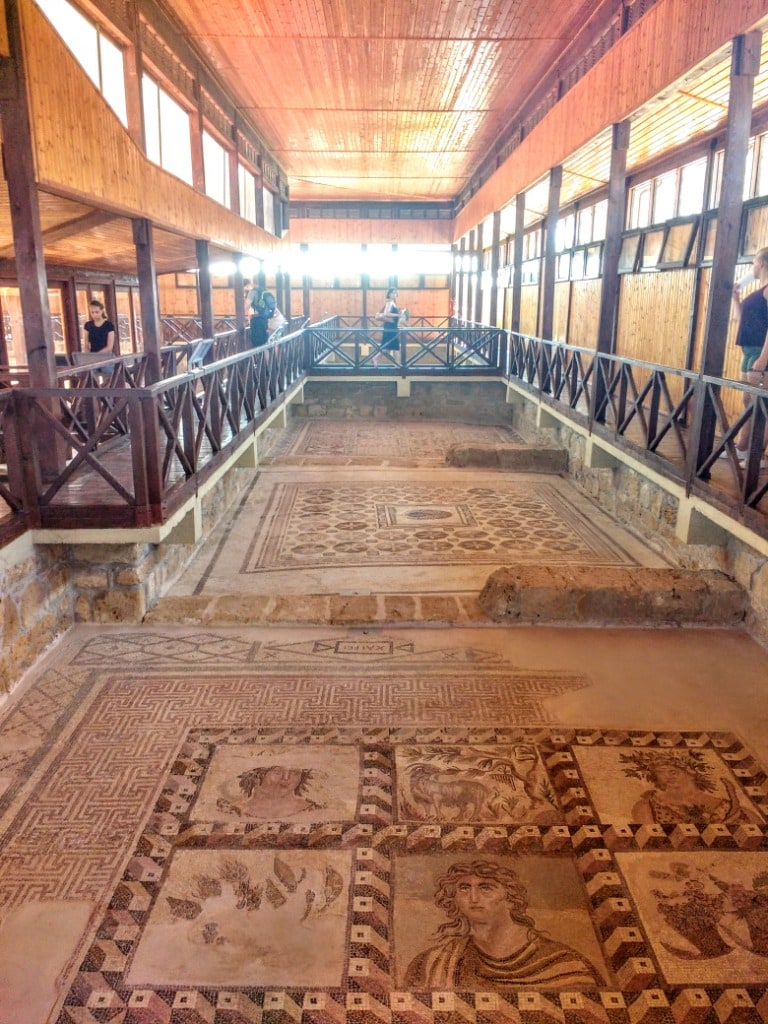
The House of Dionysos is the biggest of the villas and is protected by a large wooden structure that protects the mosaics from the weather. Again organized around a central courtyard the House of Dionysos is over 2000 square meters in size and contains over 556 metres of mosaics.
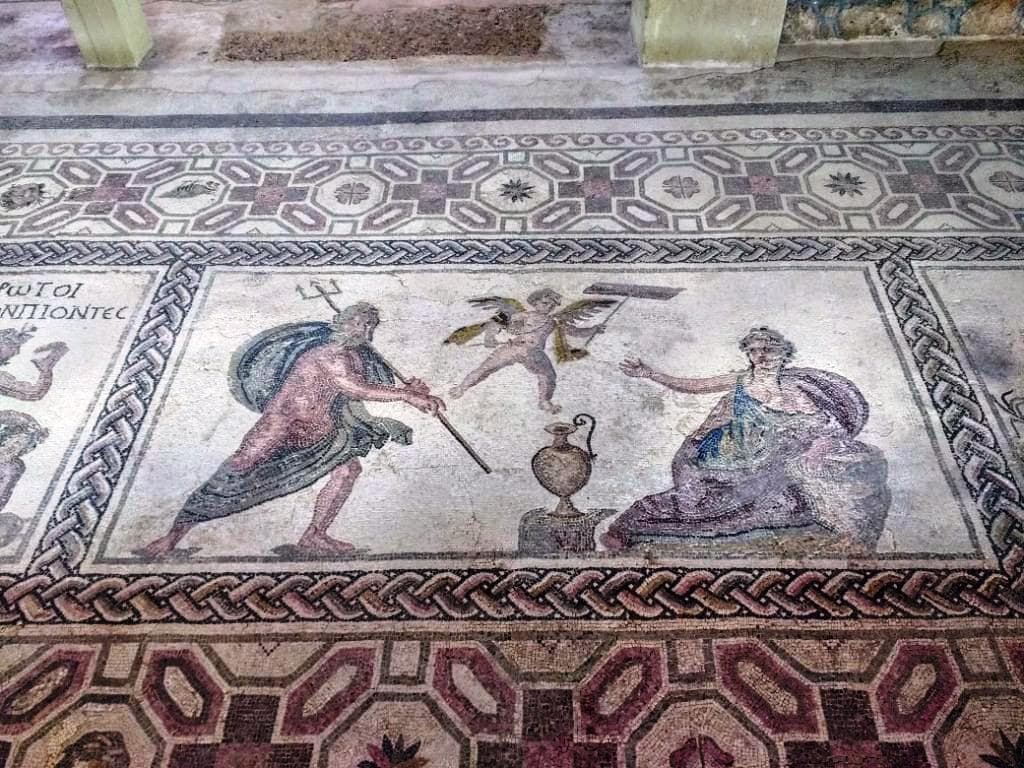
There are raised platforms throughout the building that provide great viewpoints for these absolutely jaw-dropping mosaics.
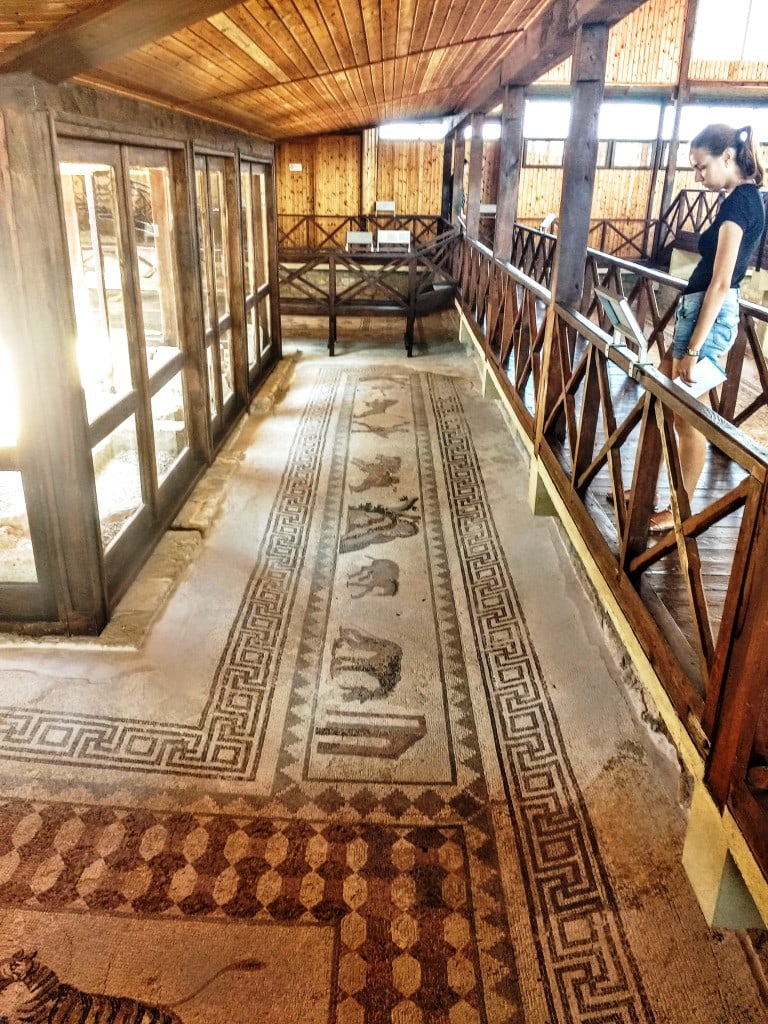
The House of Dionysos was probably built at the end of the 2nd century but abandoned in the 4th century after a massive earthquake struck the region.
The Odeon
The stunning Odeon dates back to the 2nd century and was an amphitheatre that has been restored and is now used for musical and theatrical performances. Can you imagine what it would be like to take in a musical performance here?
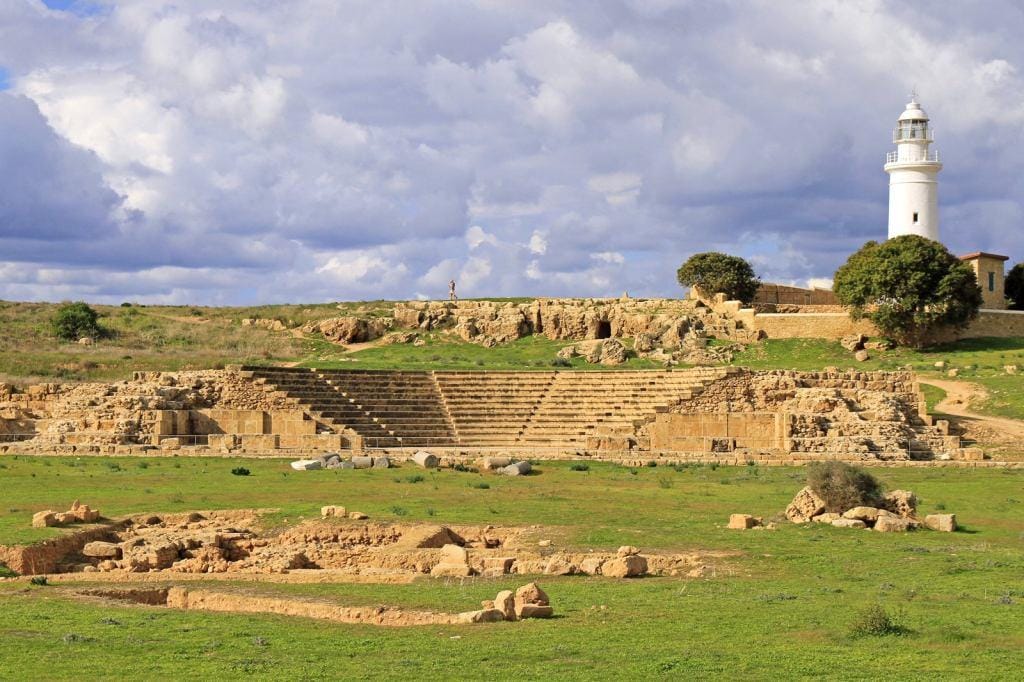
The Odeon overlooks the Agora or forum, which would have been surrounded by four porticos with white marble and granite columns.
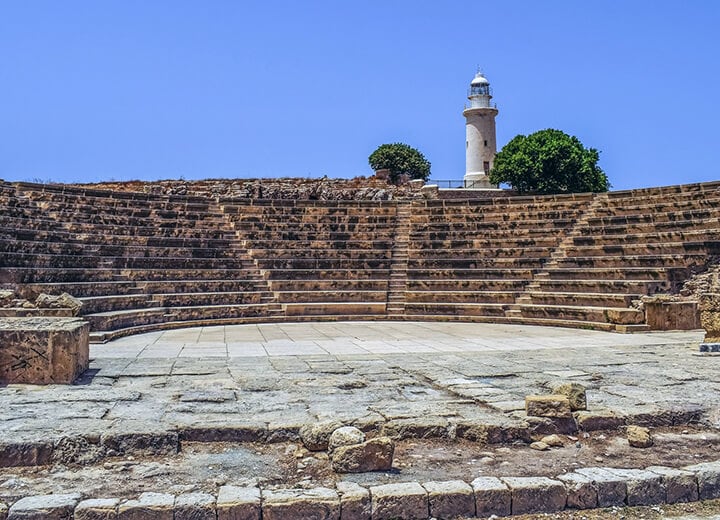
Toumpallos
The Toumpallos is an underground complex of caves and corridors carved into the rock. It was initially thought to be an ancient Greek army camp but these days archaeologists believe it was a Temple to Apollo and further excavations are still taking place.
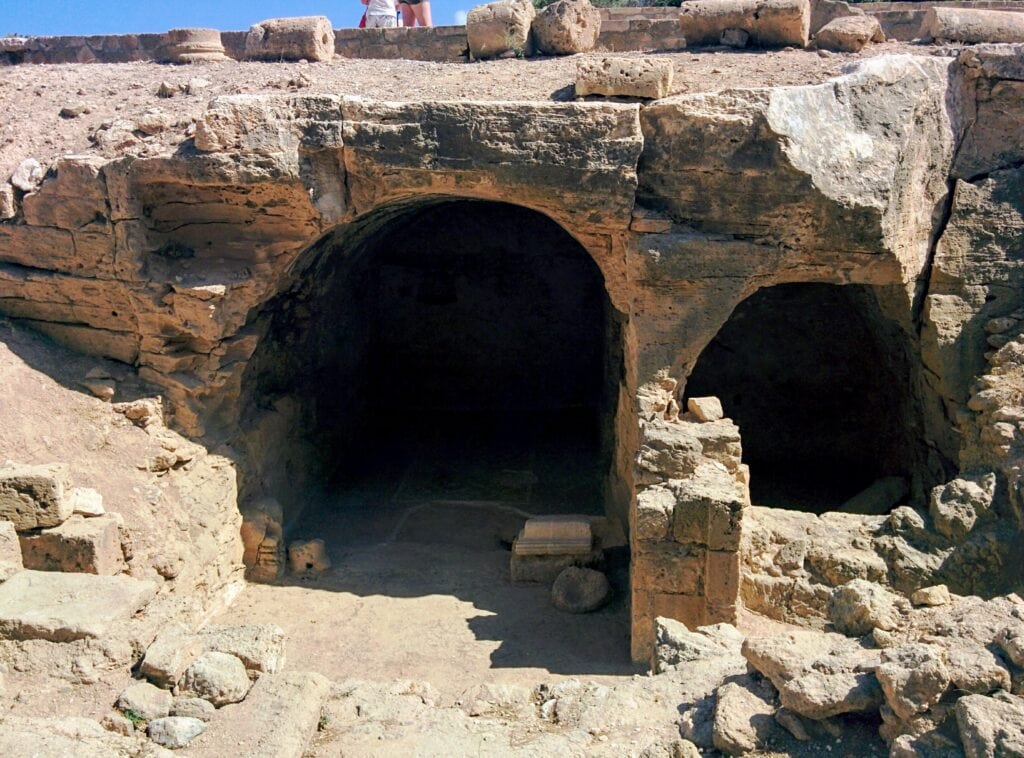
The Saranda Kolones
The castle of Forty Columns is known as the Saranda Kolones and it served as a defensive castle to protect from Arab raids. The castle was built in the 7th century and was in use until 1223 when the same devasting earthquake that destroyed the house of Dionysus ruined the castle.
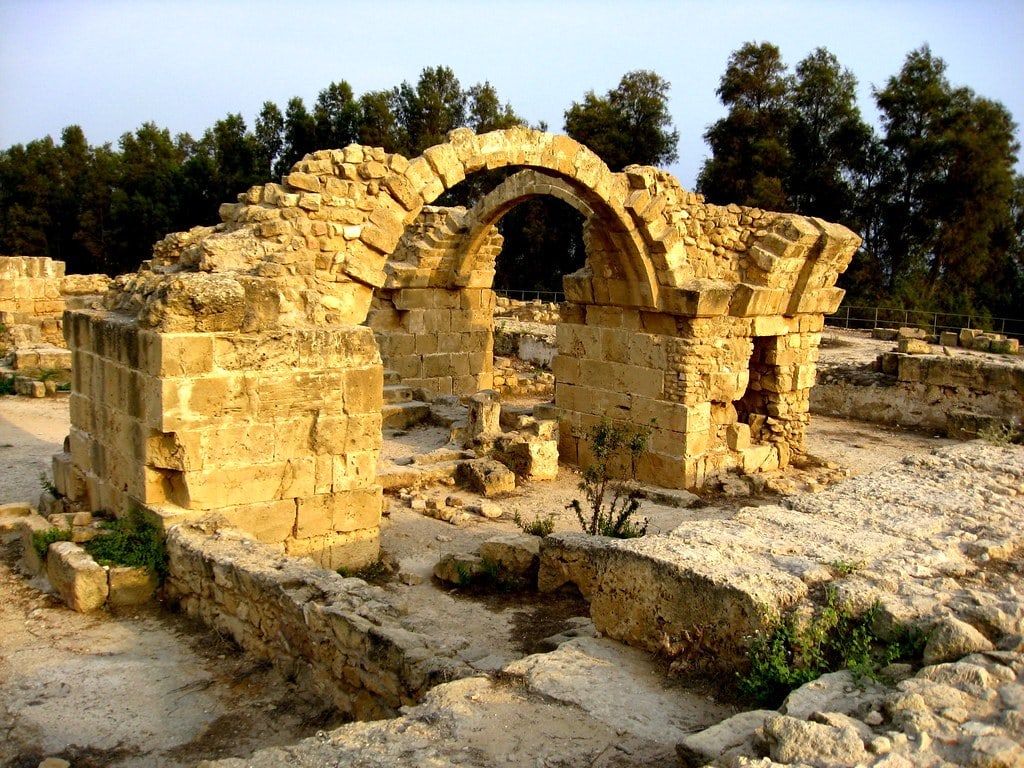
This area of the Paphos Archaeological Site is equally impressive. The castle of Forty Columns known as Saranda Kolones is south of the forum and nearby Paphos port.
The Lighthouse
A Paphos harbour landmark the lighthouse was built in 1888 and is a landmark here in Pafos. It was built to protect ships passing through the Suez Canal.
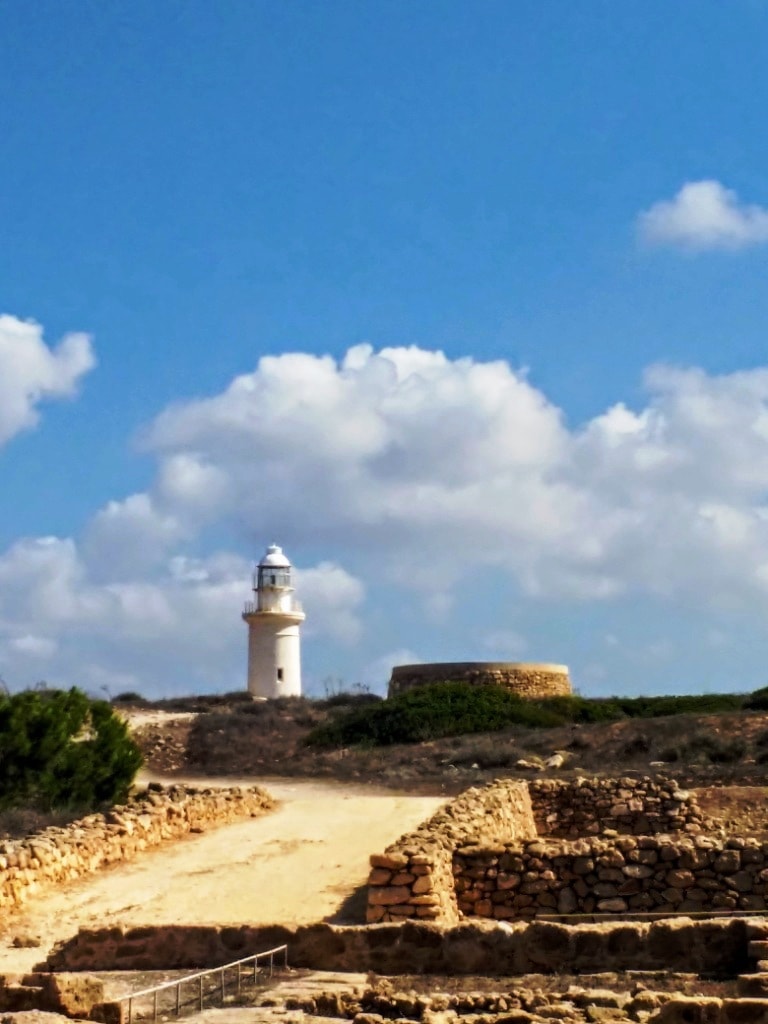
During the last restoration of the lighthouse, a Museum was opened within it and the permanent exhibition entitled “Cyprus, the sea and lighthouses – eternal history” and the cost of entry is included in your Park ticket.
Tomb of the Kings
Near the Pafos Archaeological park is the Tomb of the Kings a necropolis or graveyard. Despite its name, it was aristocrats and high officials were buried there. They took this name because of the magnificence of the tombs, which are entirely cut off the rock.
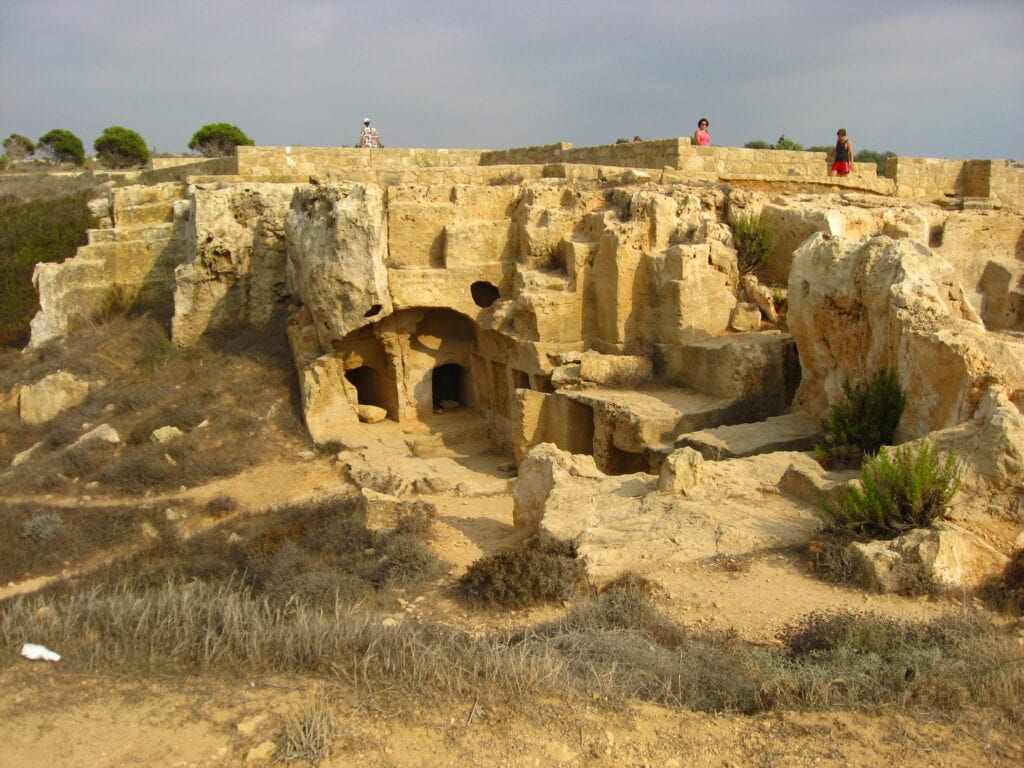
Historians believe that the tombs held the remains of the families of high-ranking officials and prominent citizens from Ptolemy’s Nea Pafos. Burials continued into the early Roman era during the 3rd century.
The entrance fee for the tomb is only 2.50€. For groups of more than 10 people, there is a 20% discount on the entrance fees or you can obtain the Paphos pass for €8.50.
How to get to Paphos archeological park
The architectural complex is located next to the sea coast in the area of New Paphos or, in other words, Kato Paphos. The Paphos World Heritage Site is easily accessible from different parts of the city.
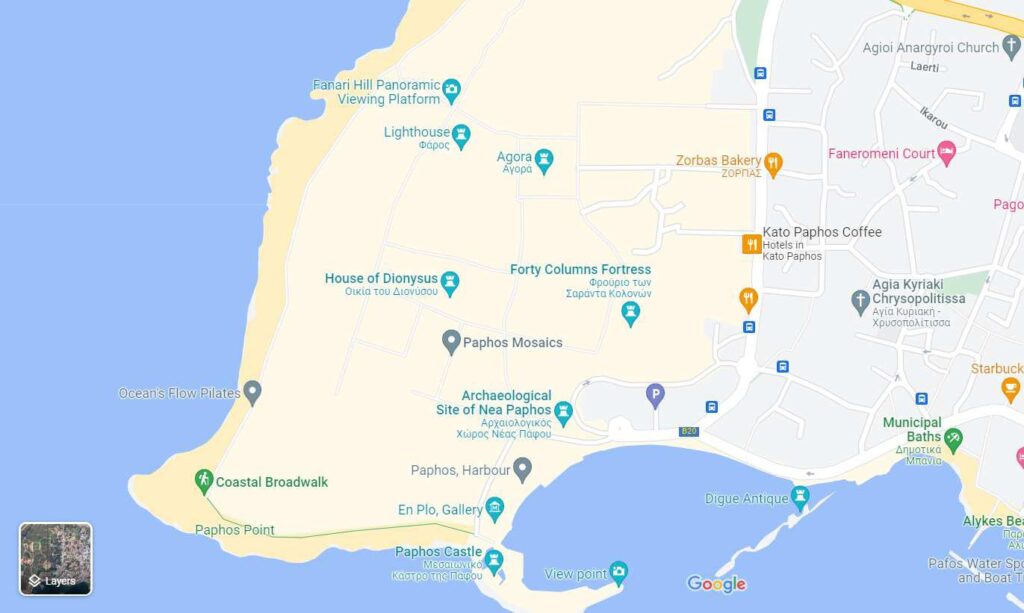
By public transport: from Paphos International Airport you can get to the park by bus number 612 (bus stop “Gavan” or Kato Paphos Main Bus Station). Buses numbered 603, 610, 611, 615, and 631 will also take you to the sights.
Other articles you might like
William the Conqueror’s Norman Castles
Pros and Cons of Living in Cyprus
31 Fabulous Things to do in Paphos, Cyprus
Agios Neophytos Monastery Cyprus a fascinating sacred site
Pin it to save it
